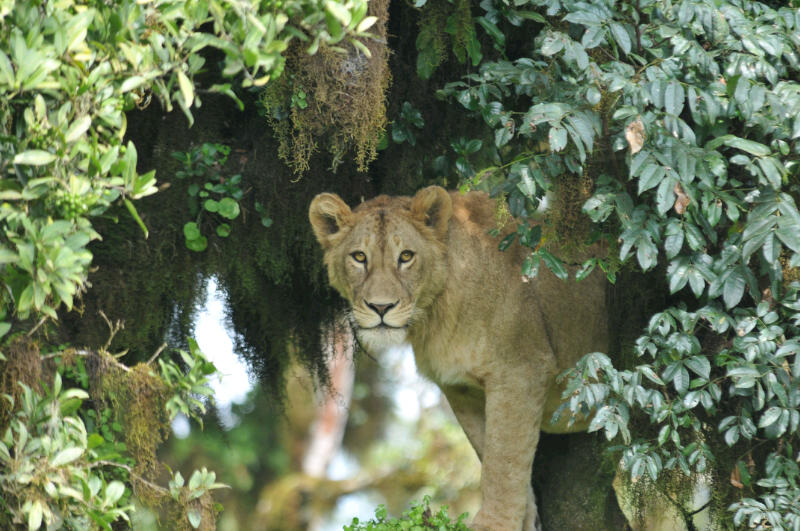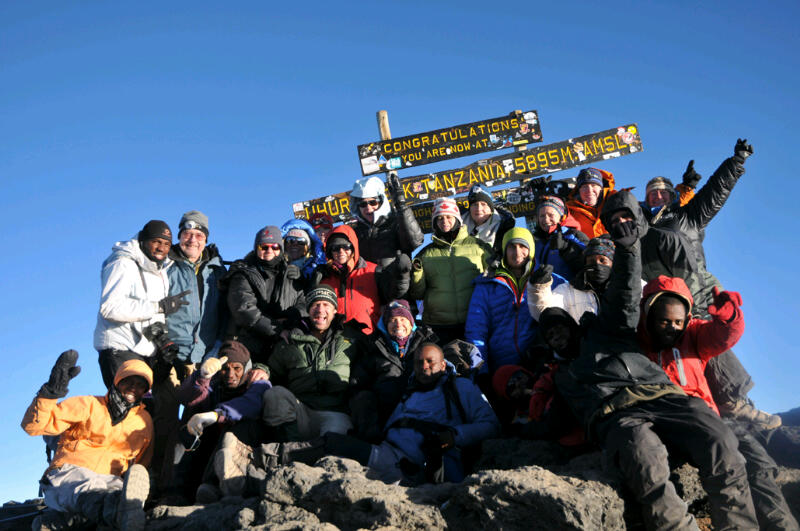
From left to right: Gary Talcott, Matt McDonough, Tom Hargis, Dan Corn, Bill Simon, Finn Wentworth, Kurt Wedberg, and Drew Daly at the SE Fork of the Kahiltna Glacier in Denali National Park.
This is a recap of a Mt. McKinley expedition that SMI founder Kurt Wedberg was a part of. A few pictures are below. The entire photo gallery can be found here: http://www.kurtwedbergphotography.com/Alaska/Mt-McKinley-May-2011/17141713_rx4KXV
On May 1 SMI guide Kurt Wedberg flew to Alaska to be a part of an expedition to Mt. McKinley’s classic West Buttress Route. The team included Finn Wentworth, Matt McDonough, and long time friend of SMI Bill Simon. The guide team included Tom Hargis, Gary Talcott, Dan Corn, and Drew Daly. Logistical support was courtesy of Alaska Mountaineering School who is an authorized concessionaire in Denali National Park.
After flying in to Anchorage the team drove to the town of Talkeetna, which is the jumping off point for expeditions into the Alaska Range. Talkeetna translated from the native language means “river of plenty” and is located where the Chulitna, Susitna, and Talkeetna rivers converge. Having less than 1000 year round residents this town is a destination for mountaineers, salmon fisherman, rafters, and tourists taking scenic flights over the Alaska Range. Here in Talkeetna we organized our equipment and took care of pre trip logistics including meeting with the National Park Service for the briefing they give all teams before starting their expeditions.

Main Street of Talkeetna consisting of a few souvenir shops, eateries, gas station, and a couple general stores.

20 bags laid out for 20 days worth of food.

Bill organizing personal gear to be used on the expedition.

Bill and Finn at the National Park Service briefing.
On May 4 the team took all their equipment to Talkeetna Air Taxi and loaded into two de Havilland Beaver airplanes equipped with skis for the 45 minute flight into the Alaska Range where they landed on the SE Fork of the Kahiltna Glacier at 7200’/2195m.

Matt and Bill in the Beaver ready to fly.

The flight into Base Camp offers many dramatic views of the peaks in the Alaska Range. Scenic flights of this range are popular among the many tourists that visit this area.

View of the lower Kahiltna Glacier during the flight to base camp.

Bill at Base Camp with the landing strip on the SE Fork of the Kahiltna Glacier on the left. Behind is Mt. Foraker. At 17,400'/5304m it is the 6th highest mountain in North America rising over 10,000'/3048m above Kahiltna Base Camp.
At Base Camp the team set up camp and organized gear and supplies for the expedition. A cache was left here with 3 days worth of food and fuel for the return trip in case weather caused a delay in the planes picking us up. On May 5 we loaded up rucksacks and sleds with 20 days worth of food and fuel plus personal gear and clothing. We descended the SE Fork to 6800’/2073m then turned north up the Kahiltna Glacier. This glacier is 33 miles/53km long and over 1 mile/1.6km wide in places. On either side of the glacier rise peaks that reach several thousand feet above. Climbers are dwarfed to little black dots in an immense landscape which gives a sense of awe and humility in this dramatic scenery. The team traveled to 7800’/2377m where Camp 1 was established.

Mt. McKinley as seen from Base Camp.

May 5: Bill and Finn geared up and ready to start the journey from Base Camp.

Bill and Matt with sleds in tow in the middle of the massive Kahiltna Glacier.

Finn getting ready to take a rest break next to Matt (seated left) on the Kahiltna Glacier.

Gary Talcott enjoying the days walk along the Kahiltna Glacier.

Tom Hargis at a carefully chosen safe spot for a rest break on the Kahiltna Glacier.

After probing out a safe zone on the glacier platforms were leveled to set up tents at Camp 1 at 7800'/2377m.

Camp 1 at 7800'/2377m.
Over the next couple of days the team would make a load carry to cache gear at 9900’/3018m, took a rest day, moved to Camp 2 at 9900’/3018m, moved to Camp 3 at 11,000’/3353m, and retrieved our cache at Camp 2.

Matt and Kurt at Camp 2. Behind in the distance is Mt. Hunter 14,570'/4441m.

Bill and Matt checking out the scenery and the route above en route to Camp 3. Behind Matt is Tom Hargis and Finn Wentworth.

Camp 3 at 11,000'/3353m. A warm day offering a great opportunity to dry out gear.

Happy Birthday Matt!

Matt and Tom in the kitchen tent at 11,000'/3353m

Bill, Kurt, and Finn at Camp 3.
From Camp 3 the terrain begins to steepen and the views continue to get more dramatic. The next step in the expedition is to carry gear to a cache at 13,500’/4115m and return to Camp 3 to sleep. Then we move to Camp 4 at 14,200’/4328m. The following day we make a short trip with empty packs to retrieve our cache. From Camp 3 we switch from snowshoes to crampons and swap ski poles for ice axes. The terrain getting to our cache site involves climbing Motorcycle Hill (35+ degrees), Squirrel Hill (35+ degrees), then we traverse across the Polo Fields, which leads us to the final hill below Windy Corner at 13,300’/4054m. We were treated to the most clear days of the expedition during these next few days. As far as the eye can see to the north we saw views of the Alaskan tundra. Decorating our view in every other direction we saw countless peaks in the Alaska Range. Breathtaking scenery, calm winds, and clear skies made for some unforgettable days of climbing!

View of Mt. Foraker (left) and Kahiltna Dome from Camp 3.

Bill and crew climbing Squirrel Hill with the Peters Glacier and the Alaskan tundra in the background.

Gary Talcott topping out on Squirrel Hill.

Bill psyched to be topping out on Windy Corner on a clear windless day!

Traversing Windy Corner

The team filling our cache site at 13,500'/4115m.

Kurt on the descent from Windy Corner with an empty pack.

Matt and Bill descending Motorcycle Hill after our carry day.

Bill and Matt en route to Camp 4.

Finn, Bill, and Matt enjoying dinner and the scenery at Camp 4 14,200'/4328m.

Camp 4 with the Orient Express Couloir and West Rib behind.

The team stacking blocks to make walls around our camp.

The team at Camp 4 after building walls for our camp. This camp offers an excellent view of Mt. Foraker behind.

Kurt and Bill enjoying a hot drink in their tent.

Finn and Bill in the dining tent.
After being on the mountain for two weeks the team was acclimatizing well and getting ready to move to our high camp at 17,200’/5243m. Winds began to increase and we then learned of impending weather. High winds were forecast to reach over 70mph on the summit and predicted to last for several days. This didn’t bode well for a safe attempt at reaching the summit. The team discussed the situation and decided to descend rather than trying to wait it out.
This expedition was a great success on many levels. The team stayed safe which is the first goal on all our trips. Everybody also learned a lot about mountaineering and about themselves. We also all returned friends and with a new perspective on the world around us. Whether or not team members decide to return to give Mt. McKinley another attempt this was definitely a great adventure and another trip of a lifetime. Thanks everybody for a great trip!

Thanks everybody for a great trip!






































































































































